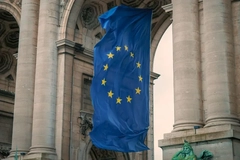France and Denmark race to ban PFAS for combating health risk over EU lag

05 Jun 2024 --- Leading up to World Environment Day today, the French Senate approves a PFAS ban proposal in cosmetics, coinciding with the Danish Parliament’s allocation of DKK404 million (US$59 million) for a national action plan to prevent, contain and clean up its PFAS contamination.
France’s proposed ban applies to kitchen utensils, ski wax and clothing beginning in 2026, with a general ban on all other textiles by 2030. PFAS are found in band-aids, toilet paper, period products and cosmetics.
Despite the “forever chemical” being believed to harm health, the UK-based Cosmetic Toiletry & Perfumery Association previously told Personal Care Insights that PFAS are rarely used in cosmetics. When they are, they do not make products unsafe due to strict regulations that help meet legal safety requirements.
Protecting against PFAS
PFAS persist in the environment and can cause irreversible harm to human and animal health. They are used in cosmetics to enhance products’ long-lasting effects.
 France aims to eliminate PFAS in cosmetics by 2026.According to experts, these chemicals accumulate over time in the environment and in bodies, posing serious health risks. The European Environment Agency has warned about “thyroid diseases, high cholesterol levels, liver damage, kidney cancers, testicular cancers, delayed mammary gland development, reduced responses to vaccines and low birth weight.”
France aims to eliminate PFAS in cosmetics by 2026.According to experts, these chemicals accumulate over time in the environment and in bodies, posing serious health risks. The European Environment Agency has warned about “thyroid diseases, high cholesterol levels, liver damage, kidney cancers, testicular cancers, delayed mammary gland development, reduced responses to vaccines and low birth weight.”
Other possible connections include, “breast cancer, inflammatory bowel diseases, longer pregnancy periods, hypertension, obesity, precocious puberty and increased risk of pregnancy loss.”
“The Esteban national biomonitoring program revealed the presence of certain PFAS in 100% of the blood of adults and children tested,” details the proposal.
Ecologist MP Nicolas Thierry introduced the bill to address the manufacture, import, export and marketing of products containing PFAS, provided that alternatives are available.
Polluter responsibility
France’s adopted bill, which underwent a second reading, had some amendments compared to the original proposal.
In addition to product bans, the bill includes provisions for monitoring PFAS in drinking water and levying taxes on manufacturers who release PFAS into the environment. This aligns with the “polluter pays” principle of the EU’s environmental policy, which holds polluters financially liable for the harm caused by their actions.
The revision adds that within a year of adopting the law, the government should adopt an interministerial action plan to finance water depollution intended for human consumption.
Additionally, the proposal indicates stricter penalties for non-compliance. The ministers responsible for risk prevention and health will create an e-map for the public, revised at least every year, of all the sites that may have emitted or emit PFAS.
 Denmark seeks to clean PFAS pollution.The bill has now been referred to the Commission on Sustainable Development and Regional Planning.
Denmark seeks to clean PFAS pollution.The bill has now been referred to the Commission on Sustainable Development and Regional Planning.
EU timeline lags
In 2020, the European Commission published the Chemicals Strategy for Sustainability, which aims to phase out PFAS unless they are essential for society. However, no concrete action has been taken.
In January 2023, Denmark, Germany, the Netherlands, Norway and Sweden proposed restricting PFAS to the European Chemicals Agency. Despite this, Thierry criticized the lengthy decision-making process, suggesting it could extend to 2027 to 2028.
On May 30, the French Senate endorsed the bill, including amendments to ban PFAS in waterproofing sprays. This decision was made despite government intentions to await EU-wide restrictions. The Senate’s approval concluded with unanimous support, except for one abstention.
Meanwhile, Magnus Heunicke, the Danish minister for the Environment, says Denmark will now take the lead in the EU by banning PFAS. The nation is among the first in the EU — possibly alongside France — to introduce a PFAS ban on clothing, shoes and impregnation products by July 2026. Denmark had already banned PFAS in food and packaging in 2020.
Denmark’s action plan allocates DKK110 million (US$16 million) for PFAS cleanup in drinking water and DKK100 million (US$14.6 million) for soil cleanup and increased product control. It also seeks to strengthen PFAS monitoring in water, food and animals while creating industry partnerships and making information transparent and accessible.
By Venya Patel












